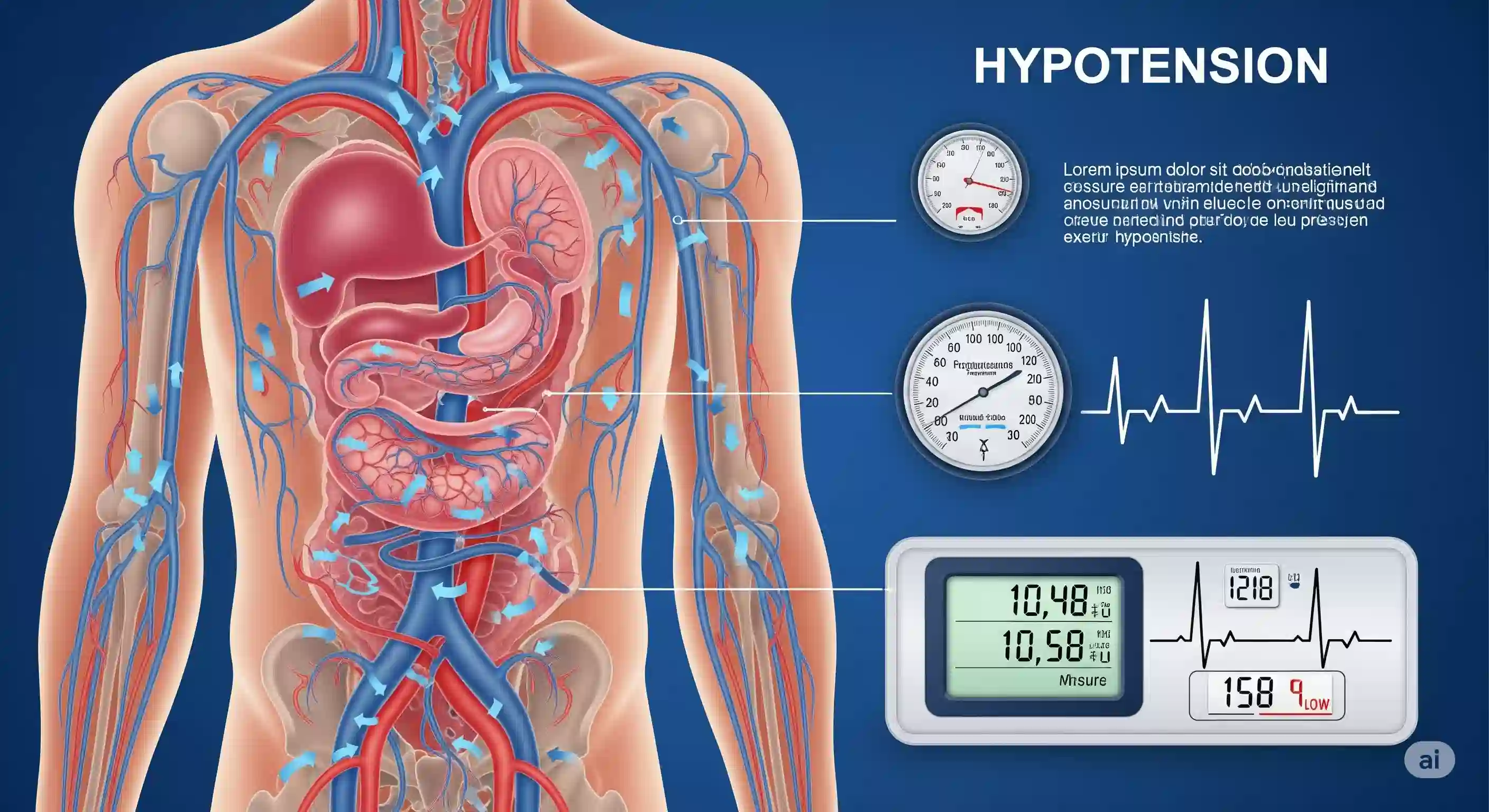Hypotension is the opposite of hypertension. While hypertension refers to high blood pressure, hypotension refers to blood pressure that is too low. Although it may not be as widely recognized, hypotension is more common than you might think. The general prevalence ranges from 5% to 34% and tends to increase between the ages of 17 and 19. That’s why it’s important to understand what hypotension is, how to recognize the symptoms, and how to prevent it effectively.
What Is Hypotension?
Hypotension occurs when blood pressure falls below the normal range—typically under 90/60 mmHg. In adults, the ideal blood pressure ranges from 90/60 to 120/80 mmHg. When it drops too low, blood flow to the brain and vital organs such as the kidneys can be reduced, triggering symptoms like lightheadedness, dizziness, instability, and in more severe cases, even fainting. Recognizing the signs early on can help your body function more optimally and reduce potential complications.
Common Symptoms of Hypotension
While low blood pressure is not as common as high blood pressure, it can still affect many people—especially those who are very active, like athletes. In some cases, this can be normal. But low blood pressure can also be caused by things like:
- Side effects from certain medications
- Standing up too quickly (also called orthostatic hypotension)
- Health problems such as dehydration or heart conditions
Some common symptoms to watch for include:
- Feeling dizzy or lightheaded
- Nausea or throwing up
- Feeling weak or tired
- Blurry vision
- Trouble keeping your balance
- Fast or irregular heartbeat
- Shortness of breath
- Fainting
- Trouble focusing
- Pale or cold skin
If you often feel these symptoms, it’s a good idea to talk to a doctor. They can help find the cause and give the right treatment to help you feel better.
What Causes Low Blood Pressure?
Hypotension can be triggered by various lifestyle and medical factors, including:
- Orthostatic Hypotension
A sudden drop in blood pressure when standing up too quickly, causing dizziness or imbalance. - Nervous System Disorders
Conditions like Parkinson’s disease can interfere with the body’s ability to regulate blood pressure. - Low Blood Volume
Blood loss from injury or dehydration can reduce blood volume and lower blood pressure. - Severe Health Conditions
Arrhythmias, pulmonary embolism, heart attacks, or lung collapse can all result in dangerously low blood pressure. - Heart and Lung Issues
When the heart beats too slowly or too quickly—or when lung function is compromised—blood pressure can be affected. - Medication Side Effects
Some prescription drugs, such as those for blood pressure, heart failure, erectile dysfunction, depression, or neurological issues, may lower blood pressure as a side effect. - Extreme Temperatures
Very hot or cold environments can impact blood pressure regulation and intensify hypotension symptoms.
Understanding the root cause of low blood pressure can help you respond appropriately and make informed decisions about prevention and care.
Simple Steps to Prevent Low and High Blood Pressure
Whether it's low blood pressure (hypotension) or high blood pressure (hypertension), both conditions can negatively affect your overall health. Maintaining a stable blood pressure is key to supporting long-term wellness.
Here are some simple habits to help:
- Eat a balanced diet
Prioritize nutrient-rich foods, reduce excess salt, sugar, and saturated fats, and increase your intake of vegetables and fresh fruits. - Stay hydrated
Aim for at least 8 glasses of water a day (about 1.5–2 liters) to maintain proper circulation. - Move your body regularly
Light exercise for 20–30 minutes a day helps improve blood flow and supports cardiovascular health. - Maintain a healthy weight
Keeping your weight within a healthy range can help reduce pressure on your heart and arteries. - Manage stress effectively
Relaxation techniques such as yoga, meditation, or mindful breathing can help stabilize your blood pressure. - Avoid smoking and excessive alcohol
Both can negatively affect your heart and blood vessels, increasing the risk of complications.
Make it a habit to monitor your blood pressure—either at home using a digital monitor or through regular check-ups at a clinic. If your readings are consistently outside the normal range, speak with a healthcare provider to receive the right treatment and prevent long-term health issues.
Source
- Hidayat, A. F., Zulfifitri, R., & Utami, G. T. (2022). Hubungan Kualitas Tidur dengan Kondisi Tekanan Darah pada Lansia: Literature Review. Jurnal Medika Hutama, 3(2)
- www.halodoc.com
Hipotensi - www.alodokter.com
Hipotensi dan Hipertensi, Mana yang Lebih Berbahaya?

